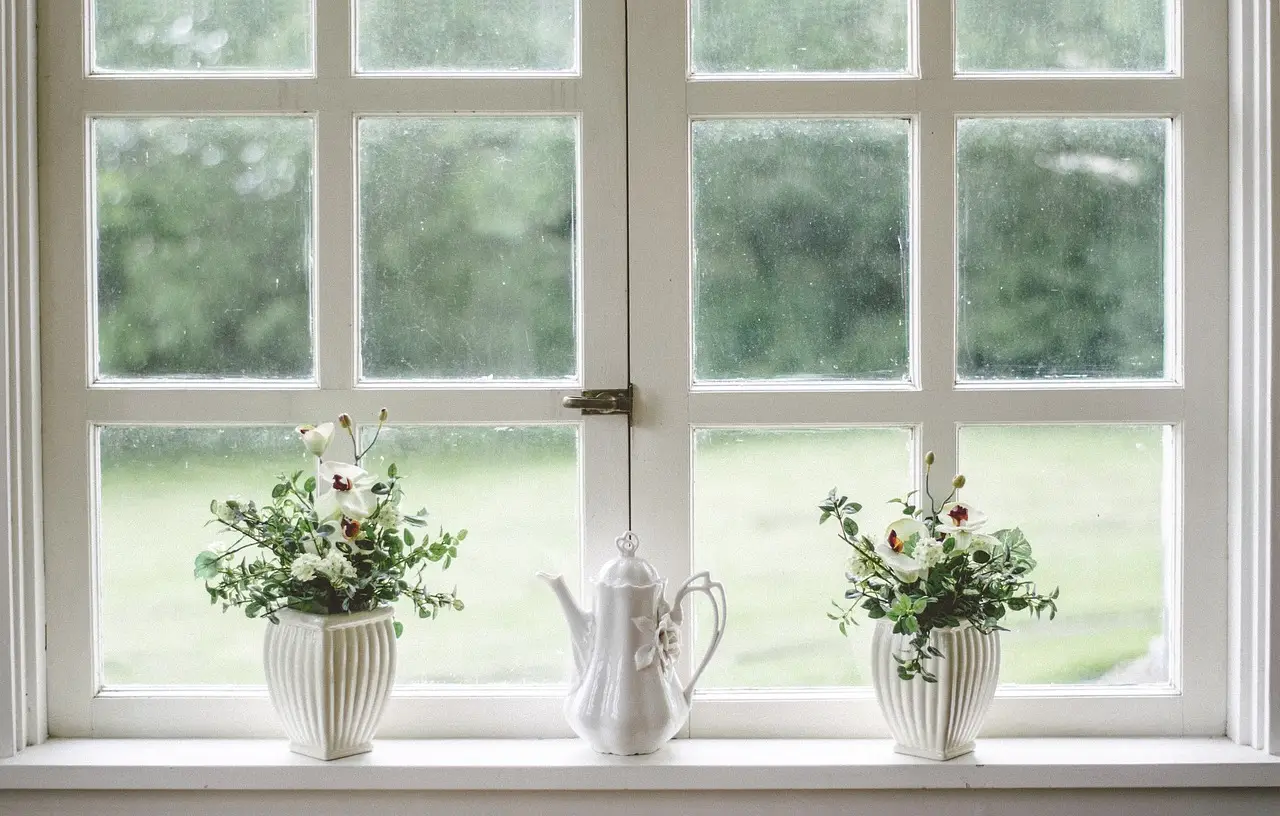When it comes to home design, the importance of choosing the right window style cannot be overstated. Windows are not just about letting in light or providing a view to the outside world. They play a massive role in defining the overall character and architectural integrity of your home. The right window style can enhance the aesthetic appeal of your home, improve its energy efficiency, and increase its market value. On the other hand, selecting a style that doesn’t harmonize with your home’s architecture can lead to a disjointed and unappealing look. There are several factors to consider when choosing windows for your home. One of the primary considerations is the architectural style of your home. Whether your home is a classic Victorian, a sleek modern design, or a charming cottage style, there is a window style that will perfectly complement its architecture. Another important factor is the function of the window. Is it meant to let in a lot of light, provide a panoramic view, or ensure privacy? The geographical location and climate also play a significant role in the decision-making process. For instance, if you live in a region with harsh winters, you might opt for double-glazed windows for better insulation. Lastly, the budget is a crucial factor. While some window styles might seem appealing, they might not be feasible if they exceed your budget.
Understanding Different Window Styles
In the world of home design, window styles are far from being a one-size-fits-all solution. Each style offers unique features, aesthetic appeal, and functionality that can complement or enhance the architectural style of your home. Let’s delve into some of the popular window styles to help you make an informed decision.The first style is the double-hung window, characterized by two sashes that slide vertically within the frame. They are a classic choice, fitting well with traditional architectural styles. The advantage of double-hung windows is their superior ventilation ability as you can open both sashes. However, the cons include their potential for air leakage over time as the seals wear out. Casement windows are another popular choice, hinged at the side to swing open like a door. These windows provide excellent ventilation and unobstructed views. They also have tighter seals, making them energy-efficient. The downside is that they require clearance to open fully, which might not be ideal for high-traffic areas. Awning windows, hinged at the top and opening outward, are perfect for rainy climates as they can stay open even in a downpour, promoting ventilation. They are also energy-efficient due to their tight seal. However, the outward-opening design may not be suitable for decks or walkways. Bay and bow windows, projecting outward from the home, create a picturesque aesthetic and a sense of spaciousness. They also allow abundant natural light. However, they can be expensive to install and maintain due to their complex structure. Slider windows, moving horizontally along a track, are easy to operate and offer wide views. They are ideal for modern homes or rooms with limited vertical space. However, they can have air leakage problems over time. In conclusion, understanding the pros and cons of each window style is crucial in choosing the perfect fit for your home. It is essential to consider the architectural style, climate, and your personal preferences to optimize the function and aesthetic appeal of your windows.
How to Choose the Right Window Style for Your Home
Choosing the right window style for your home goes beyond the aesthetic appeal; it involves a careful evaluation of your home’s architectural style, the intended function of the window, and the window’s energy efficiency. The architectural style of your home plays a significant role in determining the appropriate window style. For instance, casement windows fit perfectly in modern or contemporary homes due to their sleek design, while double-hung windows sync well with traditional architectural styles, such as colonial homes. Bay and bow windows, with their unique ability to create a sense of spaciousness, are excellent choices for Victorian-style homes. It’s crucial to select a window style that enhances your home’s architectural design rather than clashing with it.Next, consider the intended function of the window. Are you looking to improve ventilation, increase natural light, or enhance your home’s view? For instance, if your primary concern is ventilation, double-hung windows, with their ability to open from the top or bottom, would be an ideal choice. Alternatively, for those seeking unobstructed views, casement windows, which offer a complete, clear view when open, are a suitable option. Lastly, don’t overlook the importance of energy efficiency. Energy-efficient windows can significantly reduce your heating and cooling costs. Casement windows, for instance, are known for their energy efficiency due to their tight seal. On the flip side, while slider windows offer wide views and ease of use, they may have air leakage issues, leading to reduced energy efficiency. Therefore, when choosing a window style, consider its energy efficiency rating to ensure it aligns with your home’s energy goals.In conclusion, the selection of the right window style for your home is a balance of aesthetics, function, and energy efficiency. By assessing your home’s architectural style, considering the function of each window, and evaluating energy efficiency, you can ensure that your choice significantly contributes to the overall appeal, comfort, and energy performance of your home.
Matching Window Styles with Home Design
Matching your window style with your home’s architectural design can significantly enhance its aesthetic appeal. Traditional homes, for instance, often feature classic window styles such as double-hung or casement windows. These types of windows, characterized by their vertical sliding sashes or hinged sides, respectively, offer a timeless elegance that perfectly complements the charm of traditional homes. They also function well in improving ventilation and providing substantial natural light to the interiors.Modern homes, on the other hand, often lean towards more sleek and minimalistic window styles. Picture windows and sliding windows are popular choices for modern homes due to their simple yet functional design. Picture windows, with their large, unobstructed glass panes, provide an abundance of natural light and create a seamless connection between indoor and outdoor spaces. Sliding windows, meanwhile, provide wide views and are easy to operate, which aligns with the practicality and efficiency of modern home designs.Country or rustic homes, with their distinctive charm, call for a window style that reflects their unique character. Bay, bow and garden windows are excellent choices for these types of homes. These window styles, with their protruding design, not only provide ample natural light and ventilation but also add an interesting architectural element to the home. Additionally, their deep sills offer extra space for displaying decorative items or growing indoor plants, adding to the warm, cozy atmosphere typically associated with country or rustic homes.Remember, while aesthetic appeal is important, selecting a window style should also consider its functional and energy efficiency aspects. The window style should serve its intended purpose, whether it’s for improved ventilation, increased natural light, or enhanced views, and align with your home’s energy-saving goals.
Additional Considerations
In addition to style, there are other key factors that you need to consider when choosing windows for your home. These include the window framing materials, window glass options, and the maintenance and durability of different window styles. Window framing materials significantly impact the overall performance and aesthetics of your windows. Wood frames are classic and offer great insulation, but they require regular maintenance and can be more expensive. Vinyl frames are affordable, low maintenance, and provide good insulation, but they may not have the same aesthetic appeal as wood. Aluminum frames are strong, lightweight, and require little maintenance, but they are not as energy-efficient as other materials. Fiberglass frames are highly durable, provide excellent insulation, and require little maintenance, but they can be more expensive. As for window glass options, the most common types are single, double, and triple-pane. Single-pane windows are the most affordable but are less energy-efficient. Double-pane windows offer greater energy efficiency by trapping air or gas between the panes, which reduces heat transfer. Triple-pane windows provide the highest level of energy efficiency and noise reduction but are the most expensive. You may also consider coated or tinted glass for additional benefits such as UV protection and reduced glare. Lastly, the maintenance and durability of different window styles are important considerations. Double-hung windows, for example, are easy to clean and maintain, but may not last as long as fixed windows like picture windows. Casement windows are durable and offer good ventilation, but they require regular maintenance to ensure the hinges and seals remain in good condition. Sliding windows are low maintenance and durable, but the tracks can accumulate dirt and debris, requiring regular cleaning. When choosing a window style for your home, consider all these factors to ensure that your choice not only enhances the beauty of your home but also contributes to its energy efficiency and functionality.
Conclusion
In conclusion, choosing the right window style for your home goes beyond mere aesthetics. It involves a careful analysis of various factors such as the type of framing material, the glass option, as well as the maintenance and durability of the chosen style. Remember, common framing materials include wood, vinyl, aluminum, and fiberglass, each with its unique set of pros and cons. For instance, while wood exudes a classic appeal, it may require more upkeep compared to vinyl or aluminum. Moreover, the glass option you select can significantly impact the energy efficiency of your home. Single-pane glasses are less energy-efficient than their double or triple-pane counterparts. However, they may be more cost-effective upfront. The choice will depend on your specific needs and your long-term home expenses plan. Also, keep in mind the maintenance and durability of different window styles. Some styles might need regular care, but they offer other advantages such as easy cleaning or excellent ventilation. In contrast, others may require less frequent maintenance but may
not offer the same benefits. Therefore, when choosing the right window style for your home, consider these factors to ensure you get a window that not only enhances your home’s aesthetic appeal but also meets your practical needs and preferences.
Name, Address, and Phone
Hanks Handyman Services
6010 W Spring Creek Pkwy, Suite 349, Plano, TX, 75024, US
(469) 224-5659
Social Media’s
https://www.facebook.com/hankshandyman




